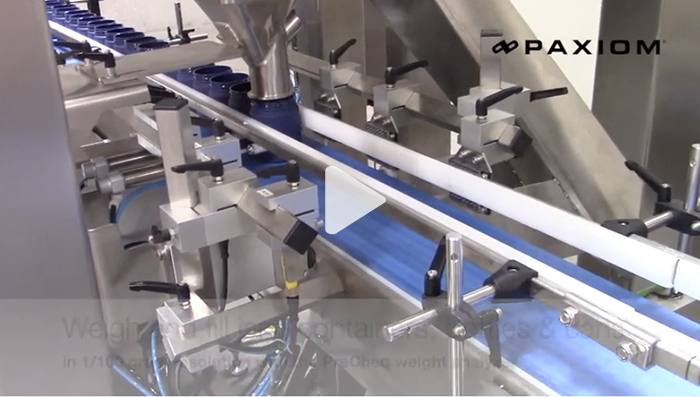Bottle Capping Machine
Numerous industries require the capping process as part of their basic packaging routine. Pharmaceutical companies, in particular, have serious needs for automatic capping machines to package their products in bottles. Automating this process also helps you save on time spent on manual capping. The Paxiom Group is a widely known brand that provides sales and service for top-notch packaging machinery manufacturers like EndFlex, ValTara, and WeighPack Systems.
For over two decades and counting, our group has been the leading provider of packaging solutions for varied and diverse applications. Some of our most popular packaging machine technologies include auger filling, vertical form, fill and seal, multi-head weighing, and premade pouch filling.
On top of that, we also offer auxiliary packaging solutions, making us an all-around
packaging manufacturer that’s rarely found in the industry these days. Our auxiliary
solutions can be categorized into three parts: labeling, check weighing, and capping &
unscrambling. Today, we will be focusing more on our capping machines.
Getting to know automatic capping machines
But before anything else, what does a capping machine really do? How important is it
in the packaging line? Let’s find out here.
Capping machines are a must for a packaging project that involves liquids. That’s
because they work by ensuring that once your bottles are filled, these machines will
properly seal them by applying caps. An automatic capping machine helps in having a
quicker and better cap placement on top of various containers. This means that you
can use this equipment to place, fit, and tighten caps on containers. Containers can
come in various forms like beverage bottles and medicine bottles.
One of the top benefits of a bottle capper is that it boosts your production output.
Additionally, you can expect a boost in the production efficiency thanks to accurate
torque values. Also, having automatic capping equipment can minimize labor fatigue
and prevent workplace injuries.
The majority of automatic cappers are aseptic, making it easier to clean them. They
are also designed to eliminate the growth or build-up of pathogenic microorganisms.
Since they typically come in compact sizes, you can use them in various places.
Furthermore, you can save money as it reduces the need for employing more human
labor.
Paxiom’s Rotary Chuck Capper & Torquer
Introducing the Paxiom Bottle Capper from the ValTara brand, this automated capper
is perfect for medium to high production speed. It’s an economical piece of equipment
that works on bottles from several industries such as pharmaceutical, confectionery,
cannabis, beverage, snack food, and many more. Our ValTara capping machine can
accommodate various size containers. Depending on the specifics of the cap and
container, this capper can finish up to 80 cycles per minute.
A pneumatic chuck in a capping machine works to provide a quick change collet pull
in. Unlike in-line capping machines, a rotary chuck capper is able to positively
position each cap on the bottle and securely tighten it to the applied torque.
Engineered with a smaller footprint than other cappers of the same speeds, a Rotary
Chuck Capper uses a Servo or VFD for every capping chuck, rather than a clutch
system like most bottle capping machines have. Consequently, this eliminates the
clutch wear parts and provides a repeatable and accurate cap torque.
Rotary Chuck Capper vs Other Types of Cappers
A rotary chuck capper works the same way as a person would cap a container. The
cap is mated to the bottle and threaded until it’s sealed tightly. On the flip side, an in-
line capping machine uses the front of the container or jar to impact the cap at a
certain angle, while it’s traveling through the machine to mate it to the surface. There
are two opposite wheels or belts rotating in different directions and these will spin the
cap and torque it to the bottle.
With in-line capping machines, the cap application and threading procedure are reliant
on mechanical angle adjustment of the cap chute and the rotating speed of the two
belts to accurately apply and torque the cap. Lastly, in-line capping produces more
missing caps and has less precise and repeatable torque application compared to a
Chuck Style capping machine.
One of the greatest limitations to production processes is the kind of automation of the
capping method. For example, a manual capping system requires extensive labor and
puts you at extreme health risks. While manual cappers may be cheap, however, in the
long run, it could be overly expensive. Moreover, it’s a slow process and has a very
low speed for around 10 containers per minute. For semi-automatic cappers, they have
higher application rates, say, 15-20 jars per minute. But for a fully-automatic capping
machine, you can expect a huge boost in your production input, impressively reaching
200 containers per minute.

